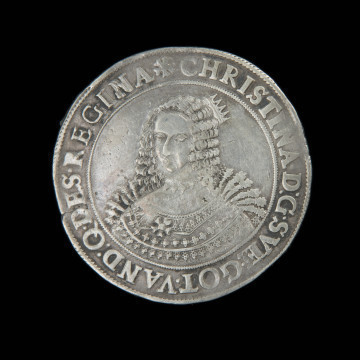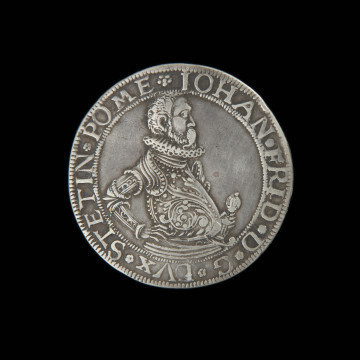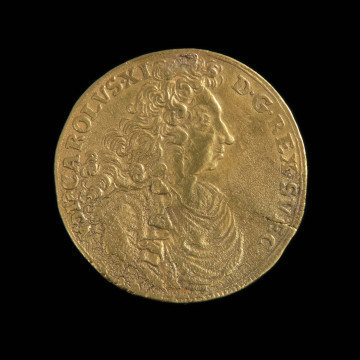
Thaler
1642
National Museum in Szczecin
Part of the collection: Pomeranian coins
After the heirless death of Duke Bogislaw XIV in 1637, Western Pomerania was divided between Sweden and Brandenburg. The Swedish rulers started minting in Szczecin already in 1640. However, they were not interested in ordering and unifying the Pomeranian minting (different mint rates applied in the former principalities) but in gaining another source of income. During the reign of Queen Christina (1640-1654), thalers and their parts and ducats were minted most willingly, according to the Pomeranian iconographic scheme with the ruler’s image on the obverse and the great dynastic coat of arms of the House of Griffin on the reverse. The rim bears the Queen's royal titles, including hereditary dominion over the Swedes, Goths and Vandals, and an inscription testifying her belonging to the Pomeranian system. Christina’s beautiful portraits appeared on all the denominations (except for small witten). From an artistic point of view, the most representative is the shots of half figures en trois quarts placed on thalers and ducats. The costume and jewellery, characteristic of the Baroque period, were rendered with great attention to detail. There are no military accents on the coins, but the highest insignia of power was added - a small crown placed on an elaborate frieze. On the reverse of the ducat, next to the traditional representation of the Pomerania coat of arms, a new element supplementing the shield appeared, namely, the bust of Christ the Saviour (Salvator Mundi) with a blessing gesture and the globe in his hand. In this case, the motif was taken from the Swedish minting of the Vasa dynasty. The figure of Christ was often depicted on stamps as a manifestation of the sacrum accompanying the exercise of power. The image was at the same time a reference to the canons of the Lutheran Church and a symbolic emphasis on the God’s saving work. On Pomeranian coins, the sense of identity of the province with the crown was most clearly expressed in this way. This ideogram appeared for the first and last time in Pomerania. The ducat is not signed, but the extraordinary artistry of the depictions testifies to the engraver’s high skills. We can only speculate that the appearance of the stamps may have been influenced by the goldsmith Ulrich Bütkau, who managed the Szczecin mint at that time.
Genowefa Horoszko
Other names
Dukat
Author / creator
Dimensions
cały obiekt: height: 0.9 mm, diameter: 22.7 mm
Object type
coin
Technique
minting
Material
gold
Creation time / dating
Creation / finding place
Owner
National Museum in Szczecin
Identification number
Location / status

1642
National Museum in Szczecin

1594
National Museum in Szczecin

1697
National Museum in Szczecin
DISCOVER this TOPIC
Museum of King Jan III's Palace at Wilanów
DISCOVER this PATH
Educational path